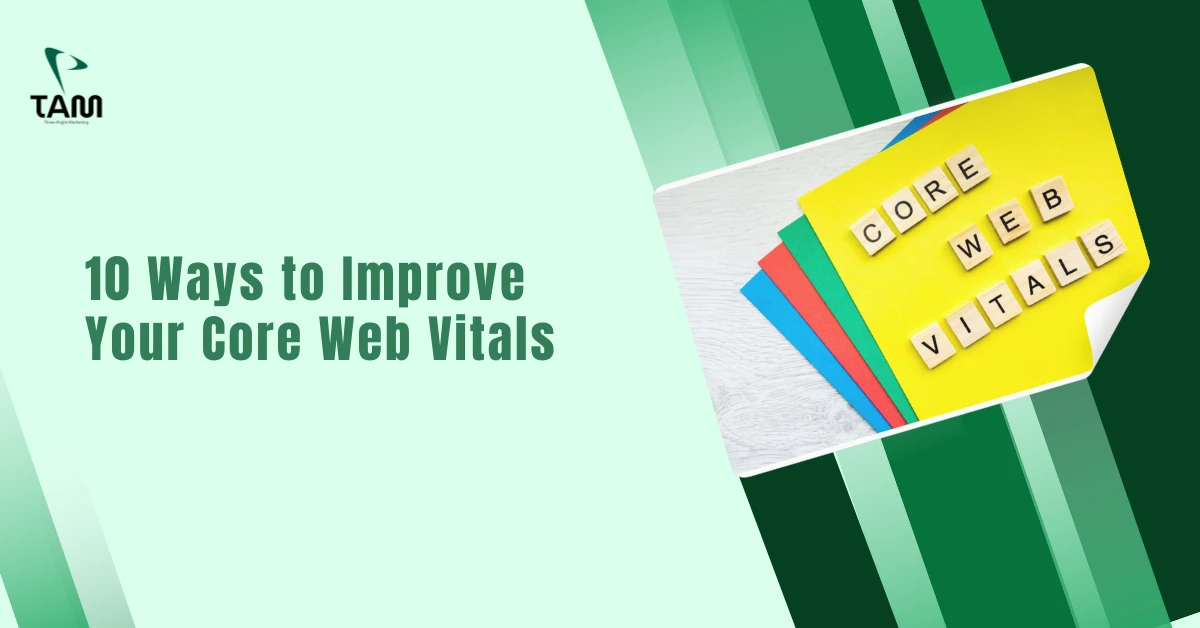Considering the current digital environment, it is impossible to underestimate the roles of the Core Web Vitals. While people are still opening up new businesses or new websites and aiming at reaching out to their target audience these factors have become very important. They can either build or take down a business’s online presence in a very short period.
Three Angle Marketing (TAM) is a leading Website Development Agency in Dubai that offers Comprehensive Web Development Services and solutions with a focus on delivering successful customized campaigns for increased web performance. Our team knows all about the growing intricacies of Core Web Vitals and how they relate to the performance of a website. To that end, we dedicate ourselves to assisting organizations in enhancing their online effectiveness and providing the highest levels of usability to their clients.
Basic Understanding Core Web Vitals:
Overview of Core Web Vitals:
The Core Web Vitals are loading metrics that define the loading performance of a website. They are critical to helping the visitor have a great experience and also to get the best out of your website. While it is easy enough to list the most important internet marketing metrics to a business, it is often equally difficult to advise enterprises on how they can enhance these figures and become even more effective in the cutthroat online marketplace.
Core Web Vitals consist of three key performance metrics: LCP metric, FID metric, and CLS metric.
- Largest Contentful Paint (LCP) analyses the amount of time required to make the largest content part get painted on the screen. Probably the best LCP metric that one can achieve is 2.5 seconds and lower.
- First Impression refers to the time of page loading from the beginning of the interaction of the user with the page to the time that the browser responds to the user. Ideally, the FID should be within zero to one hundred milliseconds in the most favorable case.
- CLS measures how stable the visual layout of a web page is, during page load and it is calculated as a fraction of the viewport width. Ideally, the respective CLS score should not be more than 0.1.
Importance of Each Metric:
All of these terms above are related to the user experience of a site or an app. The slow rendering of the LCP can slow down the impact that users get when they have to wait for the page to render crucial content. High FID can have a negative impact on interactivity whereby users feel as though the page is not responding to them. Finally, a low CLS makes the interface confusing and orientation demanding as they move when the browser is active.
Implications for SEO:
It remains well understood by now that Core Web Vitals will play a pivotal role as a ranking factor on Google. Companies that enhance their website’s Core Web Vitals will surely secure a higher ranking on search results, thus increasing the level of traffic to their site. That’s why major aspects of Technical SEO Services of every website depend heavily on the effectiveness of Core Web Vitals.
Pro Tips to Improve Core Web Vitals:
Tip 1: Optimize Images and Videos
The media you use that is not optimized can greatly affect your rates and slow down your website. Loading large images and videos of course will take time which affects the loading time of a website and lowers CWV scores.
Action Steps:
- To this end, available formats such as WebP should be employed because they deliver a higher quality of visuals than formats such as JPEG or PNG while occupying a relatively small amount of space.
- Optimize images and videos by utilizing services like TinyPNG, JPEGmini, or videos like HandBrake.
- Improve media loading on your website by implementing lazy loading which allows images and videos to load as the user scrolls.
Tip 2: Leverage Browser Caching
Browser caching is a mechanism by which some website media, including images, CSS, and JavaScript files, may be stored in a visitor’s browser for subsequent access. This means that if one visits your site after the other the browser will take less time to download these files because they were once downloaded.
Action Steps:
- Allow caching in your content management system (CMS) or your website settings back end.
- For various resources, it is necessary to set the proper time for their expiration within the cache.
- Use fewer HTTP connections to your website to reduce load and improve fast connection and acting time.
Tip 3: Minimize JavaScript and CSS Blocking
Unnecessary JavaScript and CSS can increase the overall size of your website, more specifically if it hinders the critical rendering path. This means that the browser has to download, parse, and execute this code before it can draw the website in question.
Action Steps:
- Deploy the use of code splitting where you can have large js files and then chunk them based on their needs.
- If not required you should strip down as much code as you can from CSS so that it reduces the size of files to be loaded.
- Allow as few JavaScript and CSS files as possible and call around the page so I can minimize the number of HTTP requests to your site.
Tip 4: Improve Server Response Times
The response of the server proves to be crucial while calculating your Largest Contentful Paint (LCP). A faster server can serve content faster and in return serve the user faster hence improving the general experience.
Action Steps:
- You should select a suitable and powerful hosting company with the proper resources that support your website`s needs.
- Use CDN to help host parts of your site on different servers across the world, thereby decreasing the distance that your server has to travel to get your content to users.
- Some of the important settings you can change on your server are: enabling Gzip compression, browser caching, and PHP opcode caching.
Tip 5: Prioritize Resource Loading
Optimizing resource loading is a critical factor due to its high impact on the FID enhancements. FID quantifies the time it takes for a page to become interactive. Depending on how well resources have been optimized, your site will offer smooth and stimulating to visitors.
Action Steps:
- Lazy loading and preloading must be considered as successful methods for enhancing the utilization of resources. It means that the unnecessary resources do not load during page loading but wait for it to occur so that it will load the important content first before the remaining content loads on the page. Preloading essentials tells the browser where to begin loading what and where to sit when it is called upon.
Tip 6: Reduce Redirects
Redirect chains are also especially dangerous because unnecessary passes slow down page loads, negatively affecting that site’s overall performance and nearly any Core Web Vital at the discretion of the Largest Contentful Paint (LCP).
Action Steps:
- Reviewing your current redirects ensures that all the unnecessary ones are removed to ensure only the most relevant ones are used.
- Removing more of the redirects that are still on your site will ensure faster load time which will in turn improve user experience.
Tip 7: Optimize Web Fonts
Crazy font risk can often eradicate or greatly increase the Cumulative Layout Shift (CLS) score, which measures the shift in visual stability during loading. If the web fonts used are large or take a long time to load, the text or images on the site will take time to load and thus shift and this is considered very unacceptable.
Action Steps:
- For the web fonts performance use the property font-display swap so that first the text loads with the fallback font until the actual font loads fully.
- Also, web fonts have been marked to cause high CLS; therefore, consider optimizing your web fonts and possibly decreasing their file size.
Tip 8: Minimize Layout Shifts
Large objects involved in the page layout that shift around the viewport severely influence the CLS as they interrupt the general web page usability.
Action Steps:
- To reduce instances of layout shift, pre-design giant spaces for components that may load at a later time – ads, and social network buttons. It works to maintain the stability of other content and prevent it from moving when the element loading takes place thus enhancing CLS.
Tip 9: Adopt a Mobile-First Approach
Since mobile users’ adoption is growing daily, search engines are shifting towards mobile-friendly both for the users and for the Technical SEO. The mobile-first approach will help you improve your site’s responsiveness and performance which are factors we consider for Core Web Vitals.
Action Steps:
- It is preferable to design with mobile users first, especially when it is necessary to pay attention to the most simple layouts, thoughtful navigation by touch, and the use of fast-loading content.
- Cross-check your designs on different devices to allow compatibility across the various devices and Operating systems.
Tip 10: Regular Monitoring and Testing
It is very crucial to keep an eye on Core Web Vitals, considering that the performance of the website may rapidly deteriorate. When you are monitoring your site regularly you are able to detect problem areas easily and address them in good time.
Action Steps:
- Google PageSpeed Insights may be used to track your Core Web Vitals. This will be a good way of monitoring the effectiveness of your site after trying out the above-mentioned tips and strategies.
Measuring the Impact of Improvements:
Let’s discuss two major ways to measure the impact of Core Web Vitals of improvements:
Metrics to Monitor:
Monitoring the scores of Core Web Vitals after the changes have been made is relevant to check the efficiency of optimization. Services like Google PageSpeed Insights will give a specific analysis of your site to show where you are strong and where you need to strengthen your efforts further.
Feedback Mechanism:
Two important aspects that should be used to complement your optimization efforts are user feedback and performance analytics. When working with real users, they are able to provide concrete feedback to increase satisfaction rating on your website furthermore.
Conclusion:
Enhancing the core web vitals should be considered crucial to enhance user experience and to place your site among the giants of today’s web scene. Above mentioned ten tips will help you make the most of your website which, in turn, will provide you with the opportunity to achieve more when it comes to engagement, search engine rankings, and conversion.
With these points in mind, we suggest that you apply them to optimize your websites to reach optimal performance. Therefore, the longevity of your site and the increased benefits that come from enhanced speed and responsiveness will pave the way for an improved online presence.
At Three Angle Marketing, we focus on helping businesses improve their Core Web Vitals and their website performance. Working with TAM of course means that you will be on the right track to your digital objectives and a sustaining viable competitor within the digital marketplace.



